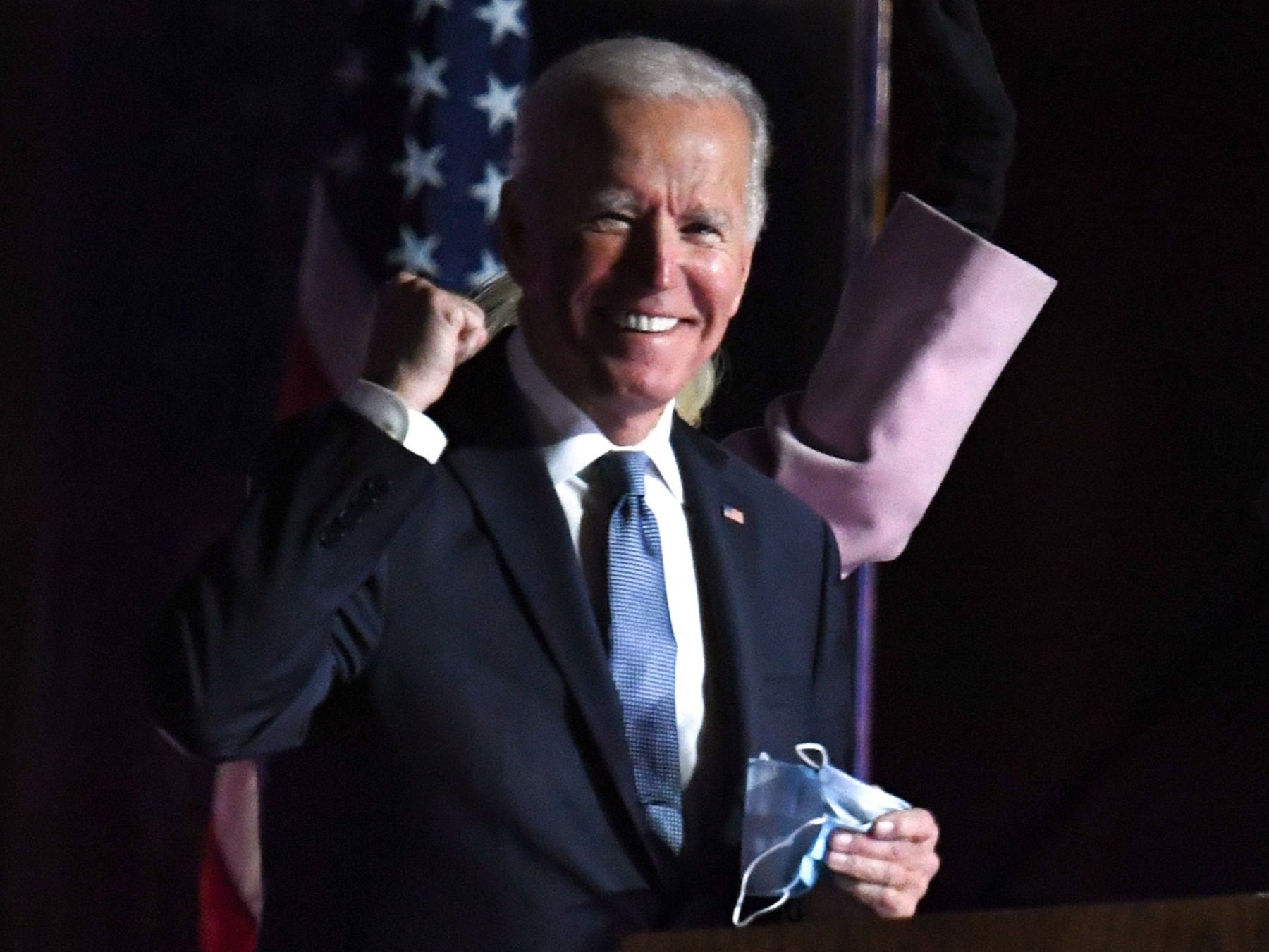Biden’s ‘blue wave' did happen. It’s just been overlooked
Don’t let our system of electoral colleges and swing states fool you into believing Americans didn’t roundly reject the Republicans this week

On the morning of Election Day, Democrats looked forward to witnessing an impending “Blue Wave”: a full repudiation of President Donald Trump and his administration.
By Tuesday evening, however, political talking heads were telling hopeful voters that “Blue Wave” was never going to come. Disappointing Congressional results showed that Americans had mostly rejected progressive politics, they said, even if they ended up putting Biden into the White House.
But the truth is that that wave did come, crashing down upon the nation during a contentious election that, at the time of publication, is still too close to call. It just got overlooked, because the system obscures it. The electoral college and the system that guarantees every election hinges on a handful of states can sometimes make the truth look grimmer than it is. When you look into the numbers, however, you see the progressive push behind the seemingly uninspiring results so far.
Democratic nominee and former Vice President Joe Biden has already received more votes than any other presidential candidate in US history — and votes are still being tallied. On Wednesday, he surpassed former President Barack Obama’s popular vote record set in 2008 — 69.4 million votes — with a resounding 72,263,868 votes. That represents slightly more than 50 percent of the total votes counted thus far.
Yes, it’s discouraging — and a harrowing reminder that a significant amount of the US population is happy to stomach, and even embrace, blatant prejudice — that more than 68 million people considered the first four years of Trump’s presidency and said, “Please sir, may I have some more?” But it’s just as encouraging to know that more than 72 million Americans wanted — demanded — change. They wanted change so badly that more than 102 million people voted prior to the election day in the midst of a deadly pandemic — the majority of them Democrats. Those same early and absentee voters are why the key state of Pennsylvania is still in play for Joe Biden. They’re also why Arizona flipped red to blue, Michigan and Wisconsin went to the Democrats, and Georgia is now considered a “swing” state.
Democrats also elected the first openly transgender state senator out of Delaware, the first Black congresswoman to serve out of Missouri, two of the first openly gay Black men elected to Congress out of New York, the first non-binary states legislator and first US Muslim lawmaker in Oklahoma, and made New Mexico the first state to send an all-women of color delegation to Congress.
The Blue Wave arrived on election day 2020. It just hit a levee hoisted and reinforced by an outdated election system rooted in racism and slavery specifically designed to empower white voters above all.
So as we continue to Monday morning quarterback the 2020 presidential election — and there are many issues that require careful examination and plenty of “come to Jesus moments” by Democrats, including and most notably the party’s fatal decision to treat the Latinx electorate as a monolithic throwaway vote — we should be careful not to dismiss the palpable disavowal voters gave the current president. There’s no need to listen to commentators like Claire McCaskill, a former US Senator, who argued on MSNBC on Thursday that “working class voters” had been “left behind” by Democrats who focused too much on “talking guns or … abortion … or gay marriage and rights for transsexuals and other people who we as a party look after”.
“As we circled the issues, we left voters behind and Republicans dove in,” McCaskill claimed. But more than 72 million voters beg to differ.
Nearly 70 percent of all Americans support access to abortion rights, including one-third of Republican voters. As of 2019, 61 percent of Americans support gay marriage, and 62 percent of Americans say they have become “more supportive toward transgender rights compared to their views five years ago.” A reported 66 percent of Americans opposed family separation at the border, and 65 percent of Americans said Trump wasn’t taking Covid-19 seriously enough.
And in record-breaking numbers, voters found ways to have their voices heard in a resounding condemnation of a presidency that has left the country sicker, poorer, and more dangerous than it was four years ago.
The wave arrived. In fact, in many ways we’ve been wading in its wake since 2018 — when more women were nominated to public office than ever before. Again, we simply overlooked it, because powerful politicians who benefit from a broken voting system refuse to abolish the electoral college and allow all Americans, no matter where they live, to have a dynamic and relevant say in who their next president will be.
Until that changes, every progressive wave ushered in by the majority of voters in this country is going to face a stifling dam. But that doesn’t mean that wave doesn’t exist.

Join our commenting forum
Join thought-provoking conversations, follow other Independent readers and see their replies